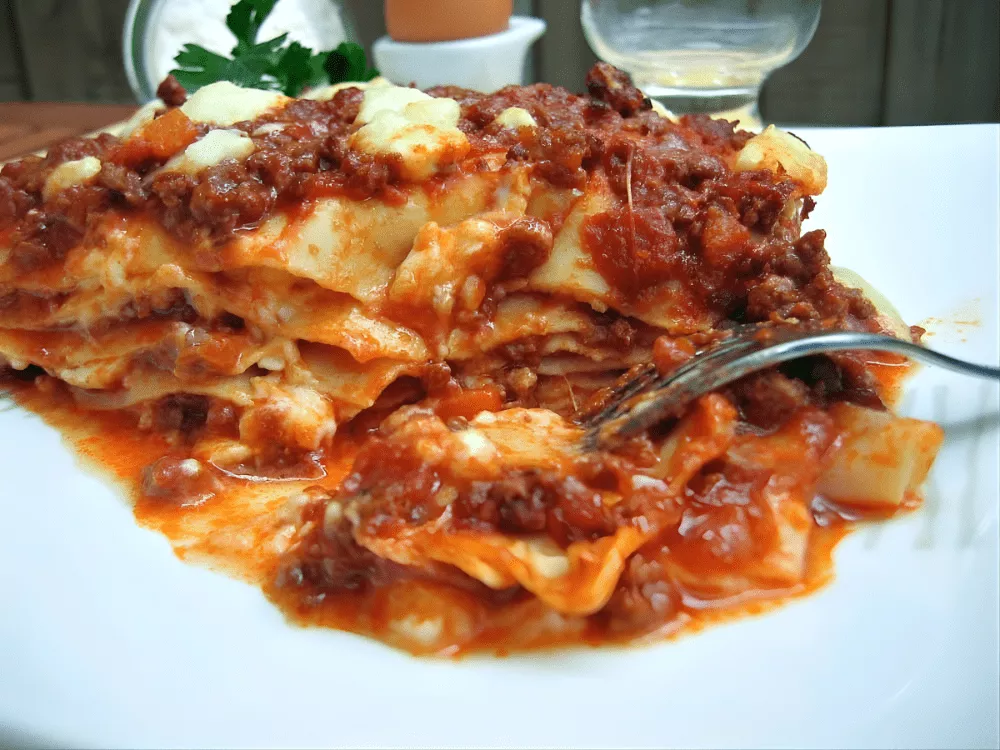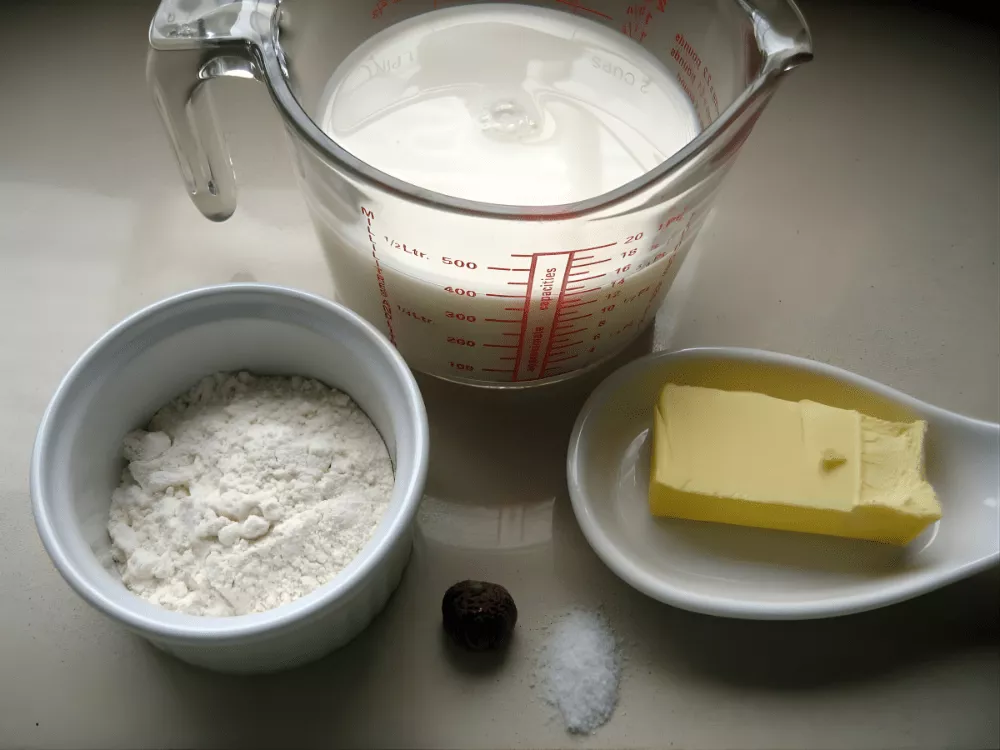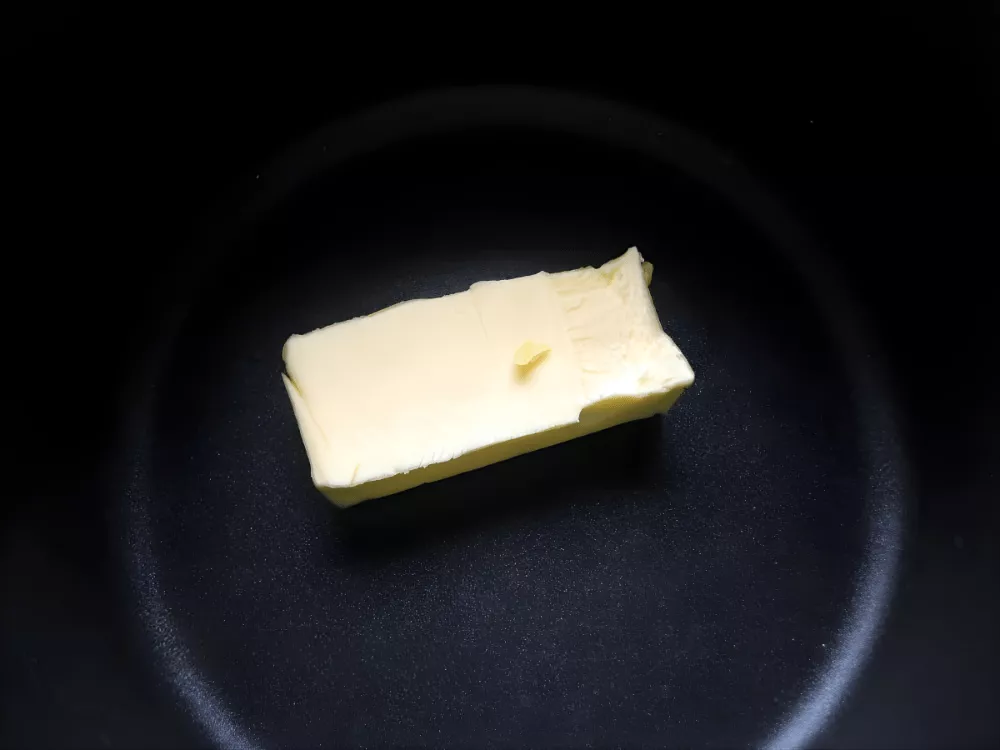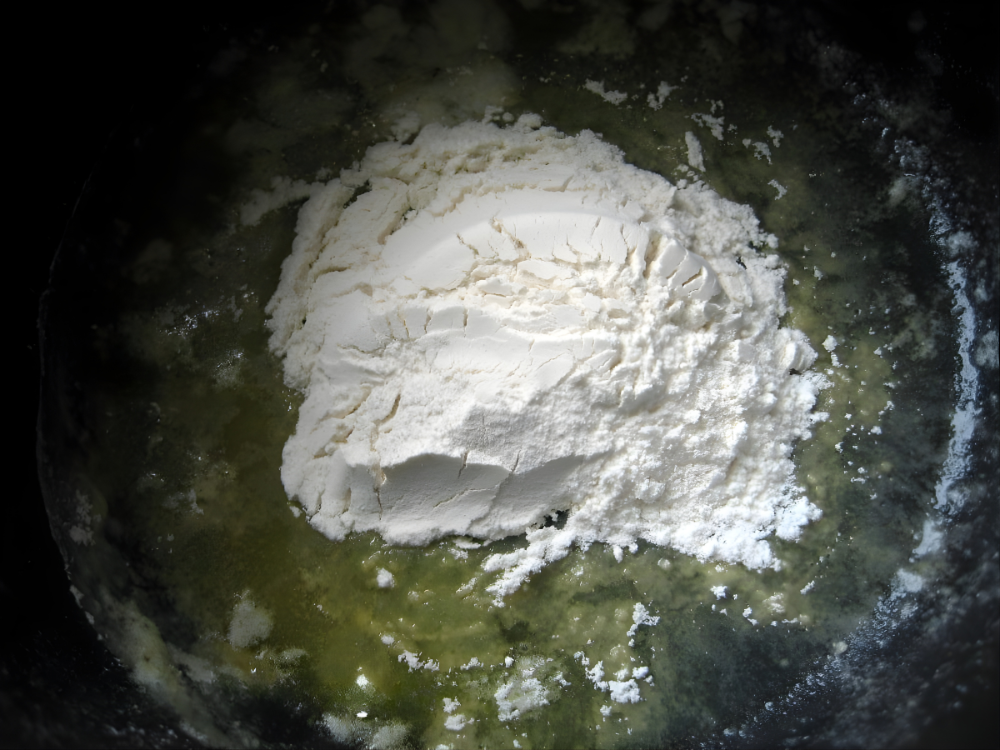With only milk, butter, and flour, this Basic Bechamel Sauce Recipe creates a velvety sauce ready to use in lasagne, pasta al forno, or gratins.

Béchamel sauce may have French roots, but it has become a staple in Italian kitchens over time. We call it besciamella in Italian, and it’s something most of us grew up making.
Made with milk, butter, and flour, it turns into a smooth, creamy sauce that forms the base of many favourites like Baked Lasagne, Stuffed Crespelle, and Radicchio and Taleggio Lasagne.
It’s simple to prepare, and once you’ve made it a few times, you’ll find yourself using it often in everyday cooking.
Why I Always Keep Béchamel in My Kitchen
- Works wonderfully in croquettes, savoury crepes, or layered vegetable dishes.
- Keeps well in the fridge for a few days and reheats perfectly with a quick whisk.
- Helps make the most of leftover vegetables by turning them into comforting bakes.
- Turns a few basic ingredients into homely meals that feel wholesome and complete.
Key Ingredients for Béchamel Sauce

Milk
Gives the sauce its smooth, creamy texture. Warm milk blends evenly with the roux and keeps it lump-free. Whole milk brings a fuller flavour, while lower-fat milk creates a lighter version.
Butter
Adds flavour and body to the sauce. It melts with the flour to create the roux that thickens the mixture. Unsalted butter works best, so you can adjust the seasoning as you go.
Salt and Nutmeg
Salt brings out the flavour, while a pinch of nutmeg adds gentle warmth. Freshly grated nutmeg gives the best result and is traditional in Italian besciamella.
Find the complete list with measurements in the recipe card below.
How to Make Bechamel Sauce
Step 1: Melt the butter in a non-stick saucepan over low heat.

Step 2: Add the flour and whisk continuously until it forms a smooth roux. Cook for 1–2 minutes, stirring to prevent it from browning.

Step 3: Slowly pour in the hot milk, a little at a time, whisking constantly. Wait until each addition is fully absorbed before adding more.

Step 4: Once all the milk has been added, season with salt and nutmeg. Continue cooking over low heat for about 10 minutes, stirring often, until the sauce thickens.

Step 5: When done, cover the surface of the sauce to stop a skin from forming.

Frequently Asked Questions
If the sauce looks a bit lumpy, keep whisking gently over low heat until it evens out. A quick blend with a hand stick mixer works well, too and restores a silky texture. If needed, strain it through a fine sieve and return it to the pan to finish cooking.
If it’s too thick, add a small amount of warm milk and whisk until smooth. If it’s too thin, let it simmer a bit longer over low heat until it reaches the right consistency.
Yes. Store it in the fridge for up to 3 days with cling film pressed directly on the surface to prevent a skin from forming. Reheat gently over low heat and whisk in a splash of milk if it becomes too thick. It can also be frozen for up to 1 month and thawed overnight before reheating.
Whole milk works best for a rich, creamy texture. For a lighter version, use semi-skimmed milk. You can replace part of the milk with cream for a more indulgent result.
Extra Help from the Kitchen
Use the Right Pan – A thick, heavy-based saucepan keeps the heat steady and stops the roux from burning. Thin pans can cause uneven cooking and affect the smoothness of the sauce.
Add Milk Gradually – Pour the milk in stages so the roux has time to absorb it evenly. Waiting between additions helps the sauce stay creamy and consistent.
Whisk in Circles – Move the whisk around the pan, reaching the corners and sides where flour can settle. This keeps the texture uniform from start to finish.
Test the Thickness – Dip a spoon into the sauce and run your finger across the back. The sauce should coat the spoon and hold a line for a second before blending again.
Cover While Cooling – Lay cling film directly on the surface as the sauce cools. This prevents skin from forming and keeps the Béchamel smooth for later use.
Variations and Twists
Herb Béchamel – Add finely chopped parsley, thyme, or chives once the sauce is cooked for a fresh twist that pairs well with vegetables and chicken dishes.
Onion-Infused Béchamel – Warm the milk with a halved onion and a few peppercorns, then strain before using to give the sauce a gentle, rounded depth.
Mustard Béchamel – Stir in a teaspoon of Dijon or wholegrain mustard at the end for a mild tang that complements ham, fish, or cauliflower.
Vegan Béchamel – Use olive oil or vegan margarine in place of butter, and unsweetened plant-based milk such as soy or oat for a smooth, creamy, dairy-free sauce.
Bechamel Cheese Sauce (also known as Mornay Sauce) – Stir in grated cheese such as Gruyère, Parmesan, or Cheddar once the sauce has thickened and is off the heat.
Storage and Shelf Life
Let the Béchamel cool completely before storing. Transfer it to an airtight container and keep it in the fridge for up to 3 days.
To freeze, place it in a sealed, freezer-safe container and use within 1 month. Reheat gently over low heat while whisking to restore its smooth consistency. If it thickens too much, add a little warm milk until it returns to the right texture.
More Ways to Use Béchamel Sauce

Basic Bechamel Sauce Recipe
With only milk, butter, and flour, this Basic Bechamel Sauce Recipe creates a velvety sauce ready to use in lasagne, pasta al forno, or gratins.
Ingredients
- 1 L – 4 cups milk – hot
- 100 g – 3½ oz butter
- 100 g – 3½ oz plain flour
- 1 pinch salt
- 1 pinch nutmeg
Instructions
-
Melt the butter in a non-stick saucepan over low heat.
-
Add the flour and whisk continuously until it forms a smooth roux. Cook for 1–2 minutes, stirring to prevent it from browning.
-
Slowly pour in the hot milk, a little at a time, whisking constantly. Wait until each addition is fully absorbed before adding more.
-
Once all the milk has been added, season with salt and nutmeg. Continue cooking over low heat for about 10 minutes, stirring often, until the sauce thickens.
-
When done, cover the surface of the sauce to stop a skin from forming.
Recipe Notes
If your sauce turns out lumpy, don’t worry. You can smooth it out by blending it briefly with a hand stick blender.


















Leave a Reply